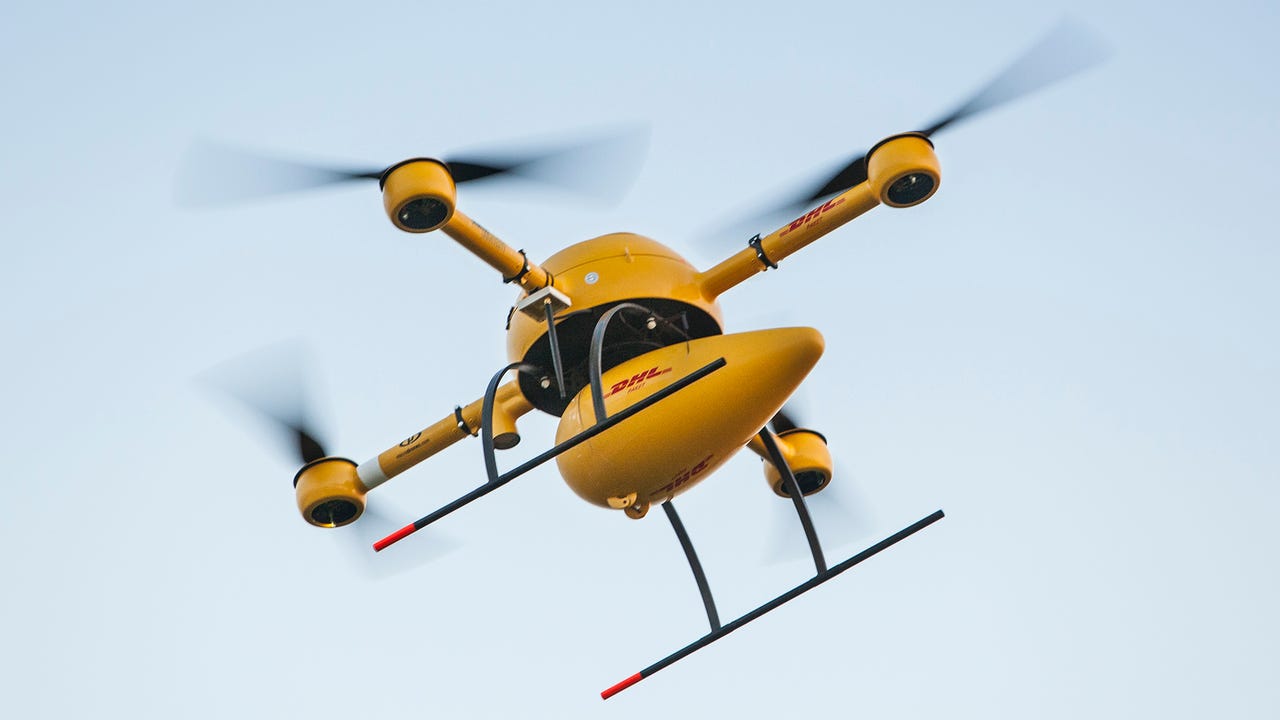Commercial drone sector comes of age, throws Vegas bash

Drones, as they say, have arrived. And while DJI, which dominates the consumer drone market, is expected to beat $1B in sales this year, the real growth over the next few years will take place in commercial drones.
Adoption across the low-hanging-fruit industries -- those for which drones are an obvious fit -- has been swift. Drones are utilized by farmers to monitor crops, electric utilities to inspect pipelines and other infrastructure, fire and rescue teams, real estate agents, surveyors, archeologists, geologists, sports teams, and news crews. DHL is already using drones to make deliveries to the remote German island of Juist, and with Amazon leading the charge in the U.S., there's fairly broad acceptance among analysts that at least some of your packages will one day be delivered by quadcopter. Police departments and state and local agencies are beginning to account for drones in their procurement budgets, and new advances in 3D sensing, collision avoidance, and noise reduction technology are addressing some of the longest-standing barriers to wide adoption.
According to CB Insights, VC funding for the drone industry topped $108 million in 2014. Like members of any hot industry, commercial drone companies, which are the current debutantes of the robotics world, needed a proper coming out party. That's just what they're getting at the first InterDrone conference and expo in Las Vegas, which runs September 9 through September 11.
"We're in a frothy phase of the market," says Ted Bahr, InterDrone orgranizer and CEO of BZMedia. "Most technology eventually enters the trough of disillusionment before long, and I think wearables are the current best example. But the drone market is still two or three years away from that kind of correction. People are excited, there are so many great ideas, and the money is just pouring in."
Even with the market for commercial drones set to grow by leaps and bounds over the next couple years, Bahr believes the more important measure of the ascendance of technology is cultural. "If you think about the 18-year-old techie-programmer-tinkerer-genius," he tells me on a recent phone call, "the kid who was reading Popular Mechanics in the 1950s, Popular Electronics in the 1960s, and Creative Computing and Byte in the 1980s, what are they working on? Twenty-five years ago it was Windows programs. Fifteen years ago it was Linux. Ten years ago they'd be doing websites, six years ago they'd be working on social networks, and four years ago it was apps. Now it's drones. All across the country you have high schools and universities starting drone programs. This is where the energy is, and it's exciting."
Drone-based 3D imaging is one of the biggest developments that promises to boost adoption. At the higher end of the market, several companies are offering drone systems that carry real-time LIDAR scanners able to instantly generate high fidelity point clouds and robust 3D images. But the most significant developments have occurred in the last few months at the lower end of the spectrum. Off-the-shelf systems now enable survey-grade images, contour maps, and three-dimensional data, which means drones are now able to navigate and collect information from a 3D world in ways they hadn't been able to before.
Robotics
"The biggest category I see right now with commercial drones is inspection," says Bahr. That means bridges, train tracks, cornices of buildings in New York. Things that are a pain in the butt to inspect manually." Bahr also sees lots of growth in what he calls applied cinematography. "That would be cinematography applied to things like selling real estate. Golf courses are another great example. Get a drone to strafe each hole on a golf course, capture video, and then offer that to golfers who are on the course. Instead of that 2D depiction of dog leg right, they can actually see the course they're playing on their cell phones."
InterDrone will include nearly 100 exhibitors and expects attendance to exceed 3000. Former WIRED editor and all-around drone guru Chris Anderson gave the keynote, and by all accounts, the vibe in the convention hall has been celebratory.